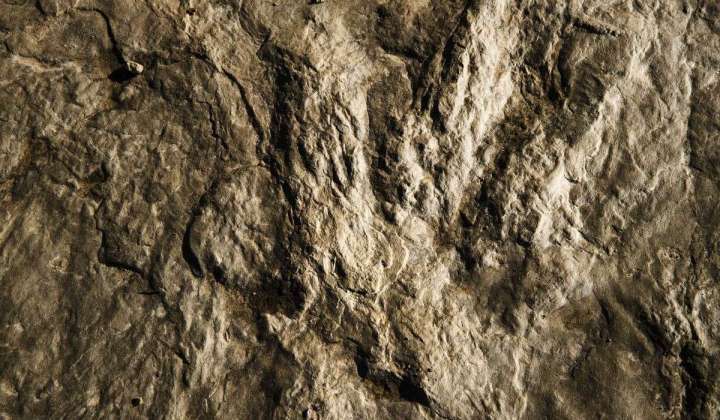Drought in Texas reveals dinosaur tracks hidden beneath a dried-out riverbed

An ongoing drought in Texas has dried out the Paluxy River, revealing over 70 new dinosaur tracks hidden beneath the now-desiccated sediment at the bottom of the riverbed.
When extant, the river runs through Dinosaur Valley State Park, about 90 minutes south of Dallas. As evidenced by the name, the park hosts several dinosaur sites and other previously uncovered tracks.
The two types of tracks found recently belong to a carnivorous theropod species akin to the T. rex, the Acrocanthosaurus, and a herbivorous long-necked sauropod species akin to a Brontosaurus, the Sauroposeidon. The latter species is the state dinosaur of Texas.
Acrocanthosaurus specimens stood around 15 feet high and weighed about seven tons; Sauroposeidon towered at over 100 feet tall and weighed around 44 tons, according to the Dallas Morning News.
The theropod tracks have three toes, while sauropod tracks tend to look bulbous, like those of elephants.
The heat has allowed researchers to study the roughly 75 new tracks hidden within the riverbed.
“It has been another very hot, very dry year so our researchers are trying to take advantage of the drought. This is not normal for us. Normally, this would all be underwater,” park superintendent Jeff Davis told the Morning News.
At the park’s Ball Room dinosaur track site, the limestone beneath the river bed that contains the fossilized imprints reached temperatures of up to 126 degrees. Researchers found the most tracks ever uncovered at the site, according to an Aug. 25 post from the Friends of Dinosaur Valley State Park nonprofit on Facebook.
Experts pointed out for clarity that the drought did not uncover pristine tracks; as evidenced in a Facebook reel from the nonprofit, dried sediment, sand and gravel has to be moved first to reveal the fossilized footprints.
“It’s important to clarify that the drought does not magically unveil tracks in pristine condition. … It takes many volunteers many days — in this case weeks — to remove the sediment covering and filling the tracks,” paleontologist Glen Kuban, who has done work at the park and the surrounding area for over four decades, told CNN.
When rains return, the tracks will again be buried beneath sediment, which does help preserve them in the geological short-term. As such, casts have been taken of the revealed footprints to take advantage of the presently parched Paluxy.






